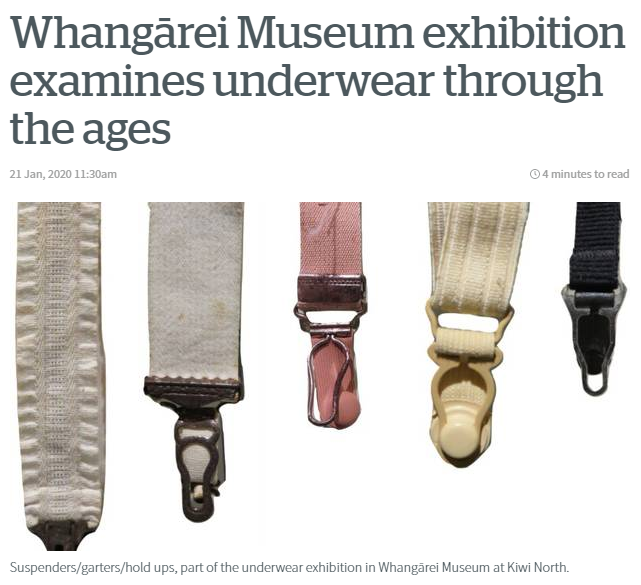
Clothing fashions can often be easily differentiated into key periods over the twentieth century. Certain styles like hem and waistlines as well as developing fabric technology are clear indicators of time of manufacture. Our underwear in particular has undergone radical changes such as the change from natural to synthetic fabrics and from many layers to nearly none at all. However one feature from the late Victorian era has surprisingly remained in modern day undergarments. Often overlooked, this is the humble suspender. Despite now being seen as unnecessary, sexualised or extra, suspender belts and garters have an interesting history ; one that is totally connected to that of socks, stockings in particular.
During and before the nineteenth century, men’s, women’s and children’s stockings were known as “hose”. Made of knitted cotton, silk and wool, hose lacked elastic fibres to hold them up. Another device was required to do this job. Earlier in history, hose were simply rolled down or held up with a tied ribbon at the thinnest point of the leg just below the knee. These garters could be highly decorative or just basic strips of fabric. Working people unable to afford other tools continued to hold their socks up like this until the influx of cheaper, factory made clothing following World War One. Suspenders became popular in the 1880s to hold up hose from higher up the body, utilising vulcanised rubber to soften metal clips which were attached to the top edges of the hose. Male garters were similar, made of elastic and clips, but held socks up from below the knee.
A 1902 Sears, Roebuck & Co. mail order catalogue advertised “Ladies’ and Children’s Hose Supporters” and “Fancy Frilled Side Garters”. Their suspenders came in more options than we have today. Hooks were attached to webbed cotton or elastic straps. These could be part of a corset’s front or sides, suspended from a belt at the waist or even connected to braces worn over the shoulders. Some of the contraptions were quite complicated to fulfil multiple functions, like a female “Safety Belt” (sanitary belt) or a child’s “Waist” (to also attach clothing to). Three under-bust corsets from Whangarei Museum and The Kauri Museum date from 1890-1910 and have long white elastic suspender straps with metal clips attached to their bottom edges. Next, three fleshy coloured girdles on display show the quickly changing fashions of the 1920s to 1930s. Their suspender straps are much shorter owing to the girdle being worn lower down the body, but the metal clip mechanisms are the same.
While the girdles and full body corselets of the 1940s and 1950s were quite different, highly elasticised undergarments compared to their predecessors, the suspenders attached to them still changed little. As it was still not socially acceptable for women to wear bare legs in public, suspenders remained important parts of everyday dress to support thigh high nylon stockings, the hooks now only improved by using more affordable plastic fastenings. A youth revolution in the 1960s finally sparked a massive break away from 150 years of corset/girdle and suspender combinations. The key instigator then was the invention and growing acceptability of miniskirts, meaning that hemlines were too short to seemly wear garters, suspenders or even stockings. This period therefore saw the invention of tights, elasticated stockings with an inbuilt waist. No longer were garters and suspenders needed by youth. Comparatively, garter belts have been worn since the 1940s by women who opted to forgo girdles and remain popular today, providing support for more elegant thigh high stockings. So, while donning your socks tomorrow, pause a moment and be thankful they do not have to be attached to your shoulders.
Georgia Kerby
Exhibitions Curator
21/01/2020